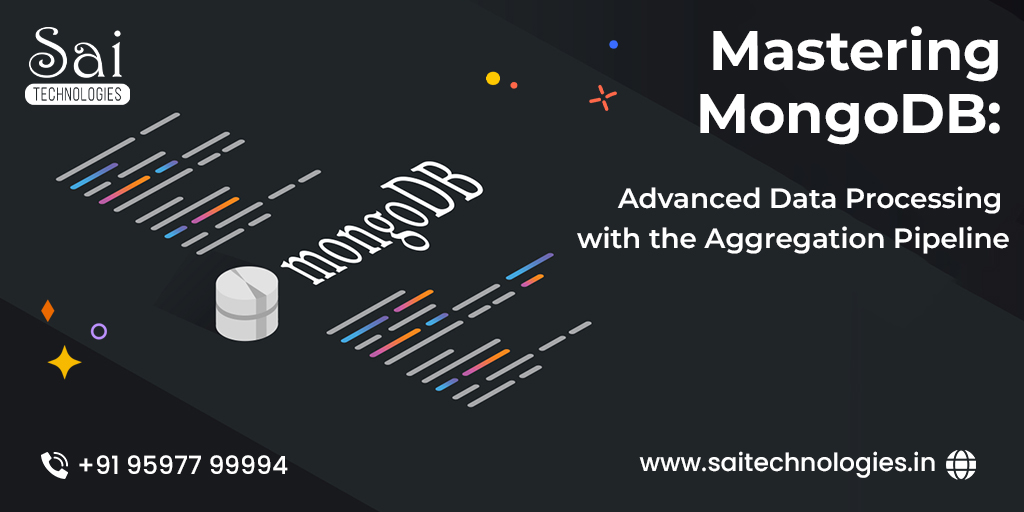Mastering MongoDB
Advanced Data Processing with the Aggregation Pipeline

In the dynamic landscape of NoSQL databases, MongoDB stands out for its flexibility and scalability. One of its powerful features, the Aggregation Pipeline, empowers users to perform advanced data processing and analysis directly within the database. This blog post delves into harnessing the full potential of MongoDB's Aggregation Pipeline, exploring key concepts, advanced techniques, and real-world applications.
Understanding MongoDB's Aggregation Pipeline
1. Introduction to Aggregation Pipeline:
MongoDB's Aggregation Pipeline is a framework for data transformation. It allows users to build a sequence of data processing stages, enabling complex transformations and computations on the dataset.
2. Key Pipeline Stages:
Explore fundamental stages within the Aggregation Pipeline, including $match for filtering documents, $group for grouping data, and $project for reshaping output. Comprehend the versatility of these stages in crafting sophisticated data workflows.
Advanced Aggregation Techniques
1. Conditional Aggregation:
Learn to apply conditional logic within the pipeline using stages like $cond and $switch. These enable the execution of different aggregation operations based on specified conditions, adding flexibility to your data processing.
2. Array Aggregation:
Delve into handling arrays within documents using stages like $unwind, $filter, and $map. Uncover strategies to reshape and manipulate array data for targeted analytics and reporting.
3. Faceted Aggregation:
Implement faceted aggregation for multidimensional analysis. This involves using stages like $facet to perform multiple independent aggregations within a single pipeline, streamlining complex data exploration.
Real-World Use Cases
1. Data Enrichment:
Explore how the Aggregation Pipeline can be leveraged for data enrichment by combining and transforming information from multiple collections, offering a holistic view of your dataset.
2. Time-Series Analysis:
Uncover techniques for time-series analysis using date aggregation operators. Learn to group and project data based on time intervals for insightful trend analysis.
3. Geospatial Aggregation:
Harness the power of geospatial data processing with stages like $geoNear and $geoWithin. Understand how to aggregate and analyze location-based information for spatial insights.
Performance Optimization
1. Indexing Strategies:
Optimize aggregation performance by strategically indexing fields used in pipeline stages. Explore index types, including compound indexes, to accelerate data processing.
2. Pipeline Optimization:
Fine-tune your aggregation pipeline for efficiency. Learn about best practices, such as using the $merge stage for result persistence and utilizing the $out stage for storing aggregated data in a separate collection.
Integration with Business Intelligence Tools
1. Connecting to BI Tools:
Explore ways to integrate MongoDB's Aggregation Pipeline with popular Business Intelligence tools. Understand how to leverage the processed data for insightful visualizations and reporting.
2. Exporting Aggregated Data:
Learn techniques for exporting aggregated data to external systems. Whether it's exporting to CSV, JSON, or connecting with visualization tools directly, streamline the process of sharing insights.
Conclusion: Mastering MongoDB's Aggregation Pipeline
As we navigate the intricacies of MongoDB's Aggregation Pipeline, we unlock a world of possibilities for advanced data processing. From fundamental concepts to real-world applications, this guide equips you with the knowledge to elevate your MongoDB skills. Embrace the power of the Aggregation Pipeline to transform your data into actionable insights, setting the stage for data mastery in the world of NoSQL databases.

